Visit Mont Saint-Michel
Our discovery of the week is the Mont-Saint-Michel! Mont-Saint-Michel is a tidal island, in Normandy In 2019, the island had 29 inhabitants. With its 2.5 million visitors per year, this must-see monument of French tourism is full of history!
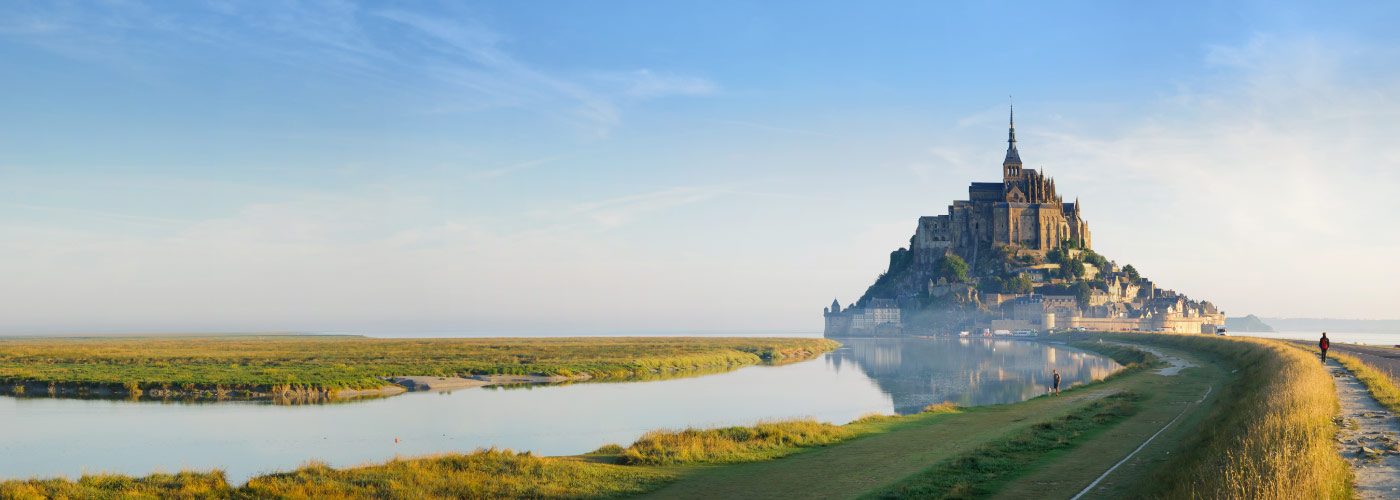
origins
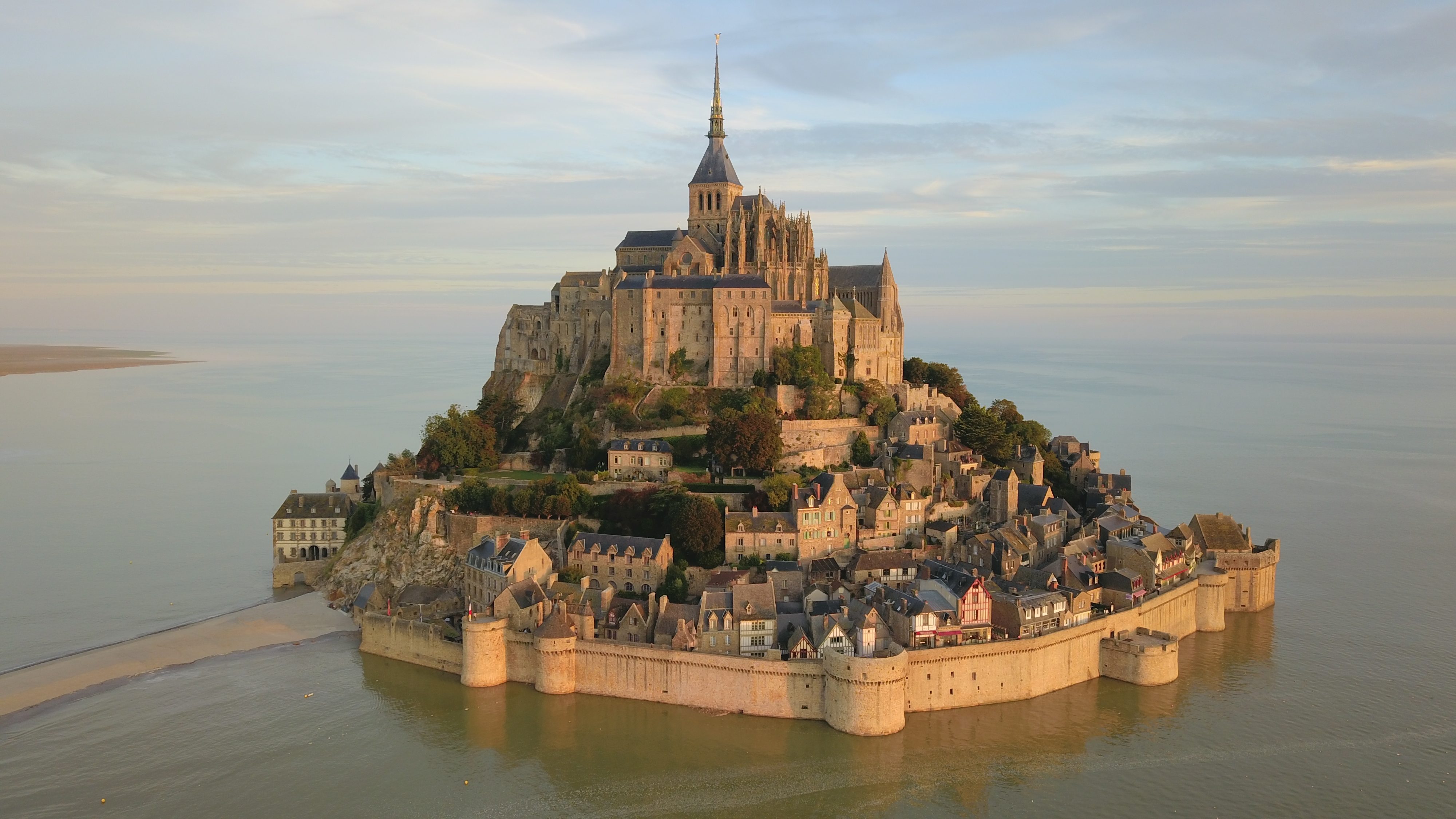 Under the name of Mont Trombe, the first traces of occupation of the island date back to the VIth century. A community of Canons settled
there in autarky and hermitage, and erected a cult around Saint-Michel. The first populations to settle there were during the Viking raids
in 810. The village welcomed its first pilgrims, accessing the island at low tide. Mont-Saint-Michel and its surrounding bay were inscribed
on UNESCO's World Heritage List in 1979 for its unique aesthetics and its importance as a medieval Christian site. It is visited by more
than 3 million people each year. More than 60 buildings in the commune are protected in France as historical monuments.
Under the name of Mont Trombe, the first traces of occupation of the island date back to the VIth century. A community of Canons settled
there in autarky and hermitage, and erected a cult around Saint-Michel. The first populations to settle there were during the Viking raids
in 810. The village welcomed its first pilgrims, accessing the island at low tide. Mont-Saint-Michel and its surrounding bay were inscribed
on UNESCO's World Heritage List in 1979 for its unique aesthetics and its importance as a medieval Christian site. It is visited by more
than 3 million people each year. More than 60 buildings in the commune are protected in France as historical monuments.
A fortress for all ages
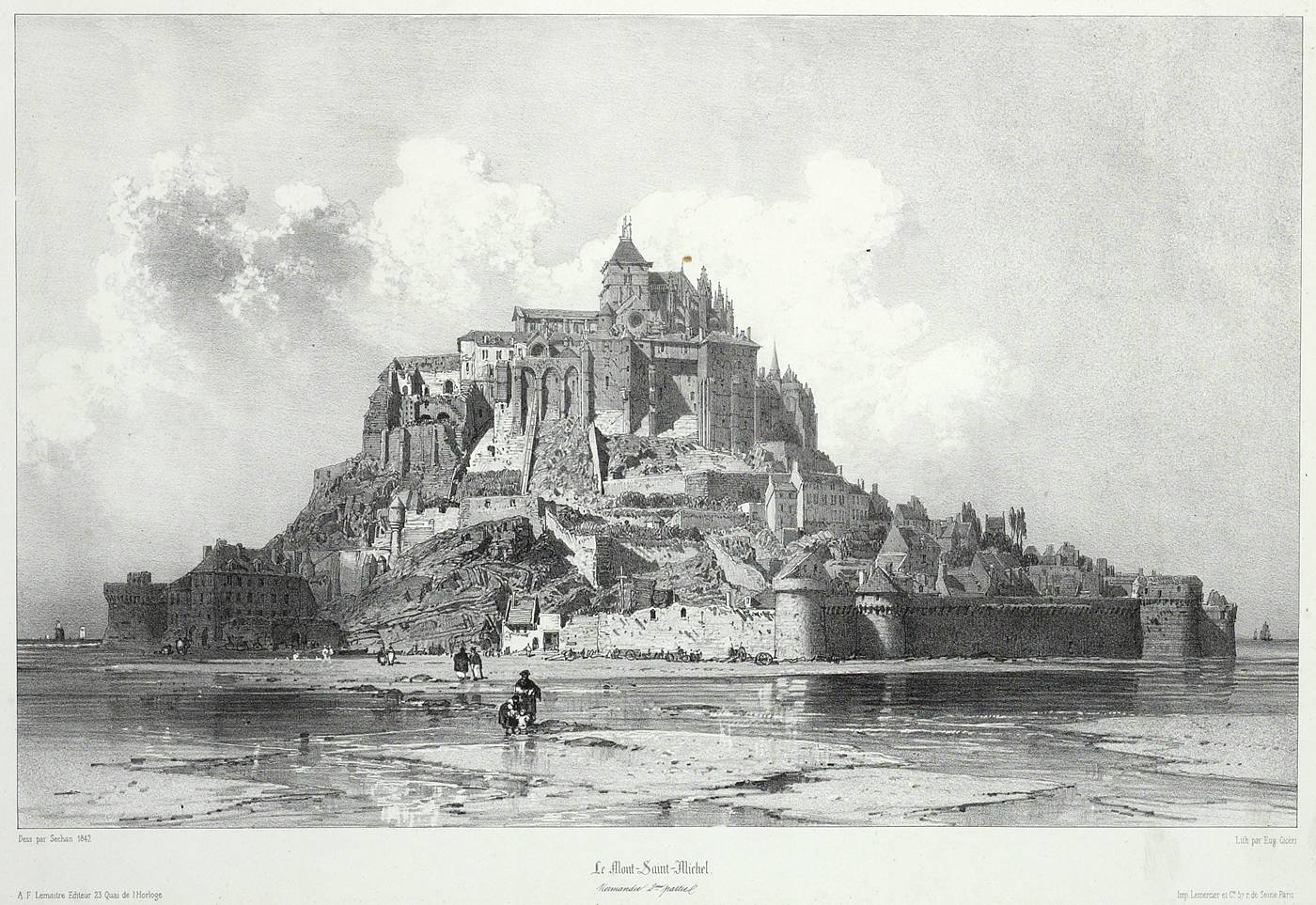 The geographical position of Mont-Saint-Michel gives it a natural advantage for defense. First against the Viking invasions but also during
the numerous wars during the Middle Ages. The position of the town - on an island a few hundred meters from the land - made it accessible at
low tide to the numerous pilgrims of its abbey, but defensible because a rising tide would run aground, chase away or drown potential
attackers. The Hundred Years' War (1337-1453) made it necessary to protect Mont Saint-Michel with a set of military constructions that
allowed it to resist a siege of almost 30 years. The island remained undefeated during the Hundred Years' War. Following the French
Revolution, the monks had to abandon the abbey, which became a state prison. Until 1863, 14,000 prisoners spent time in this "Bastille
of the Seas", where tides and shifting sands made escape impossible. The families of the prisoners then replaced the pilgrims who had
once frequented the village's alleys.
The geographical position of Mont-Saint-Michel gives it a natural advantage for defense. First against the Viking invasions but also during
the numerous wars during the Middle Ages. The position of the town - on an island a few hundred meters from the land - made it accessible at
low tide to the numerous pilgrims of its abbey, but defensible because a rising tide would run aground, chase away or drown potential
attackers. The Hundred Years' War (1337-1453) made it necessary to protect Mont Saint-Michel with a set of military constructions that
allowed it to resist a siege of almost 30 years. The island remained undefeated during the Hundred Years' War. Following the French
Revolution, the monks had to abandon the abbey, which became a state prison. Until 1863, 14,000 prisoners spent time in this "Bastille
of the Seas", where tides and shifting sands made escape impossible. The families of the prisoners then replaced the pilgrims who had
once frequented the village's alleys.
Tourism
 In 1863, the prison closed. The following year, the Service des Monuments Historiques restored the building and opened it to the public. In
order to bring the tourists, more and more numerous, a dam-road was built in 1879. In 1901, a tramway linked the metropolis to the island,
making the island lose its maritime character. 1966 marked the millennium of the foundation of the abbey and the return of a religious
community. Since 2001, the brothers and sisters of the Monastic Fraternities of Jerusalem have been providing a permanent spiritual
presence, welcoming pilgrims and visitors from around the world.
In 1863, the prison closed. The following year, the Service des Monuments Historiques restored the building and opened it to the public. In
order to bring the tourists, more and more numerous, a dam-road was built in 1879. In 1901, a tramway linked the metropolis to the island,
making the island lose its maritime character. 1966 marked the millennium of the foundation of the abbey and the return of a religious
community. Since 2001, the brothers and sisters of the Monastic Fraternities of Jerusalem have been providing a permanent spiritual
presence, welcoming pilgrims and visitors from around the world.
Twin city
Mont Saint-Michel is twinned with the shrine of Itsukushima in Japan, which is a religious island that seems to be floating. At the other end of the world, but similar!
Lord of the rings
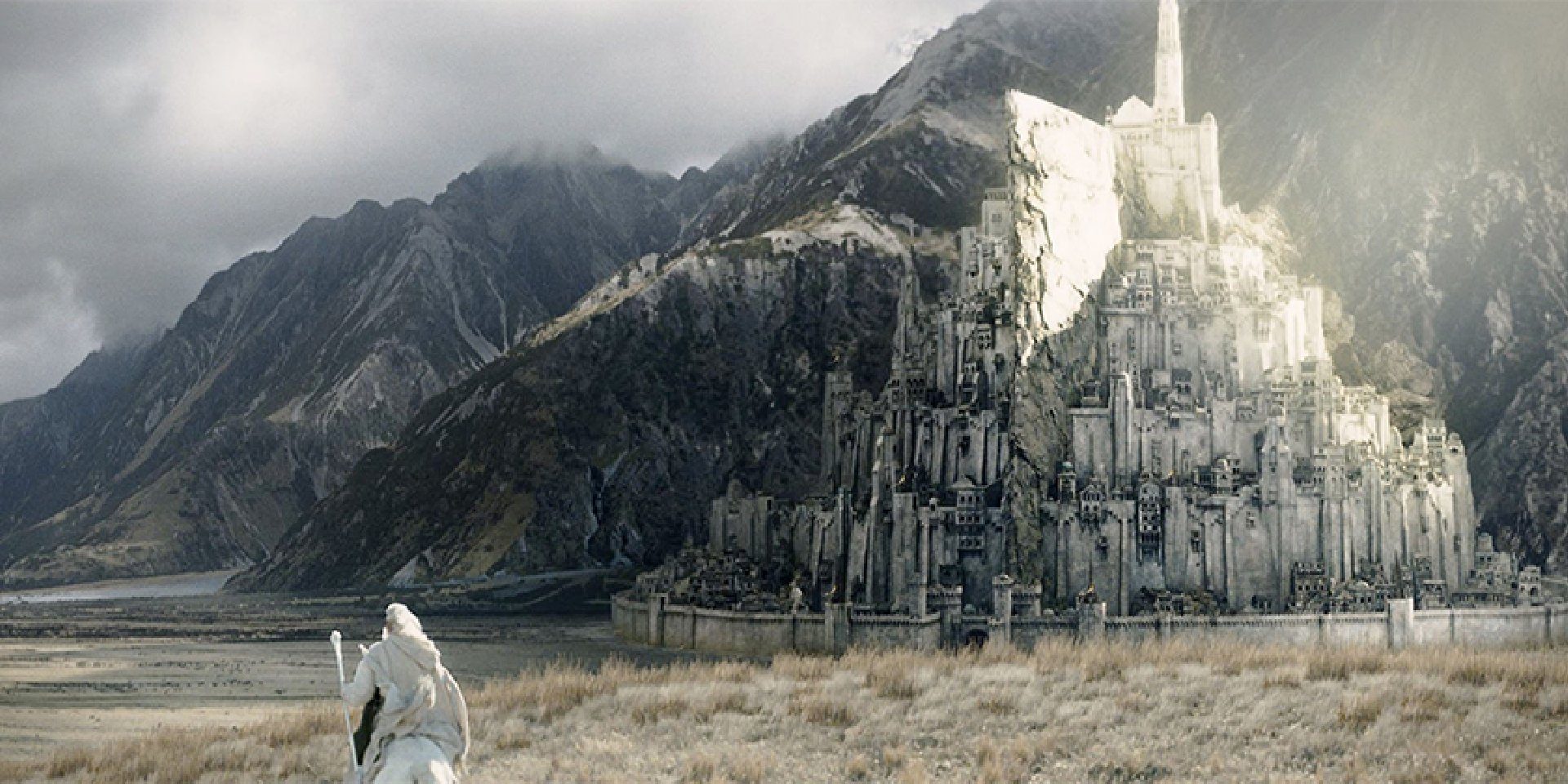 Mont-Saint-Michel has served as an artistic inspiration for many works. In Peter Jackson's 2003 film, The Lord of the Rings: The Return of
the King, the capital of Gondor, Minas Tirith, was modelled on Mont Saint-Michel. Similarly, the city and castle of Disney's hit Tangled
were based on Mont-Saint-Michel, as was the location design of Dark Souls New Londo Ruins.
Mont-Saint-Michel has served as an artistic inspiration for many works. In Peter Jackson's 2003 film, The Lord of the Rings: The Return of
the King, the capital of Gondor, Minas Tirith, was modelled on Mont Saint-Michel. Similarly, the city and castle of Disney's hit Tangled
were based on Mont-Saint-Michel, as was the location design of Dark Souls New Londo Ruins.
A very French concern
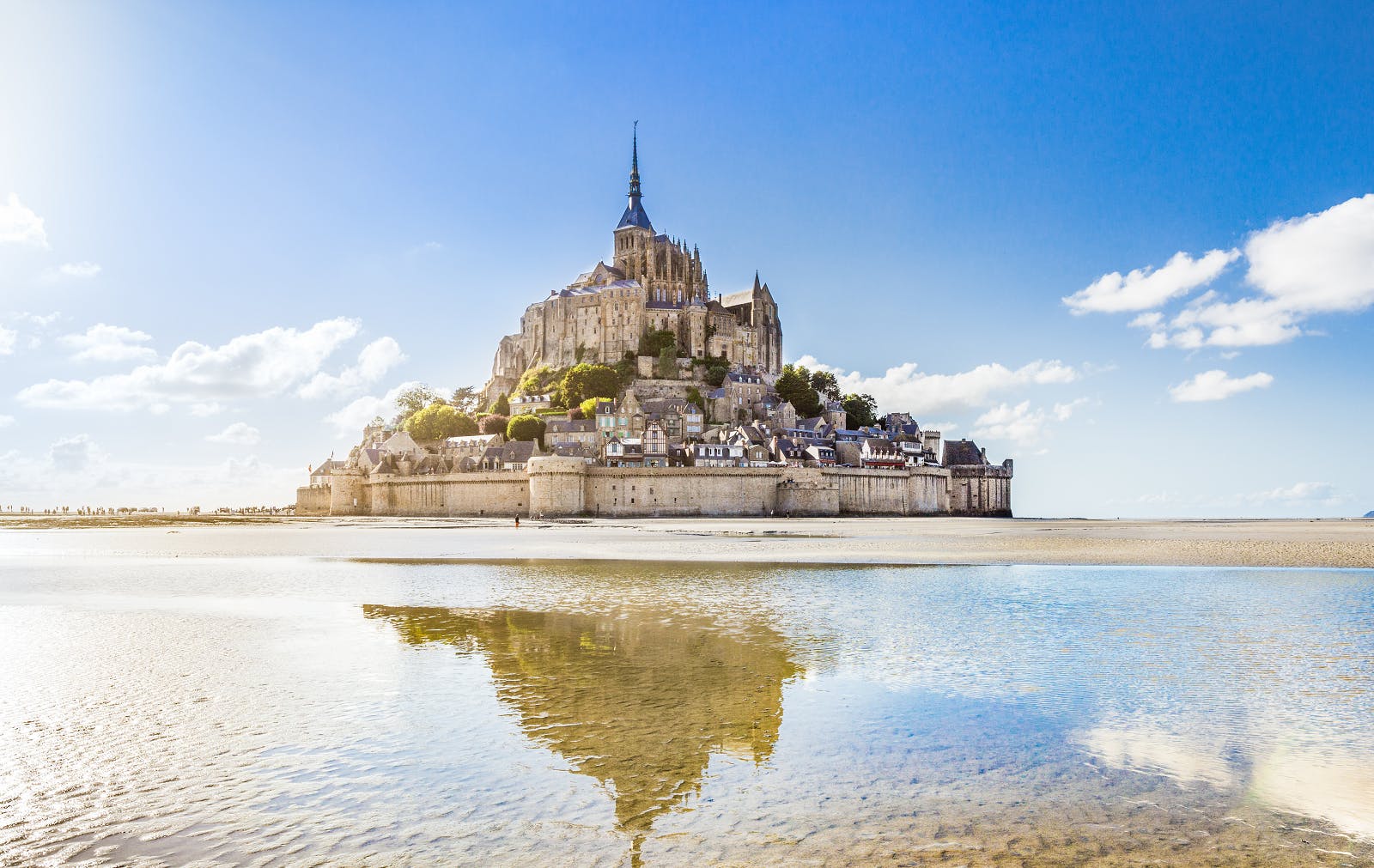 The historic monument is perhaps the object of the country's most famous quarrel. Proclaimed Norman, claimed by the Bretons, what is really
the history of the rock that became a mountain? Bretons and Normans regularly quarrel about the ownership of the famous rock. The border
between Brittany and Normandy was drawn according to the water course of the Couesnon. Its bed would have moved according to the years,
making the possession of the Mont-Saint-Michel unclear. Officially, the Mont-Saint-Michel is Norman, notwithstanding the Bretons. We don't
take sides!
The historic monument is perhaps the object of the country's most famous quarrel. Proclaimed Norman, claimed by the Bretons, what is really
the history of the rock that became a mountain? Bretons and Normans regularly quarrel about the ownership of the famous rock. The border
between Brittany and Normandy was drawn according to the water course of the Couesnon. Its bed would have moved according to the years,
making the possession of the Mont-Saint-Michel unclear. Officially, the Mont-Saint-Michel is Norman, notwithstanding the Bretons. We don't
take sides!
-Jade
Design by Monsieur Graphic
